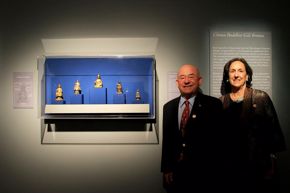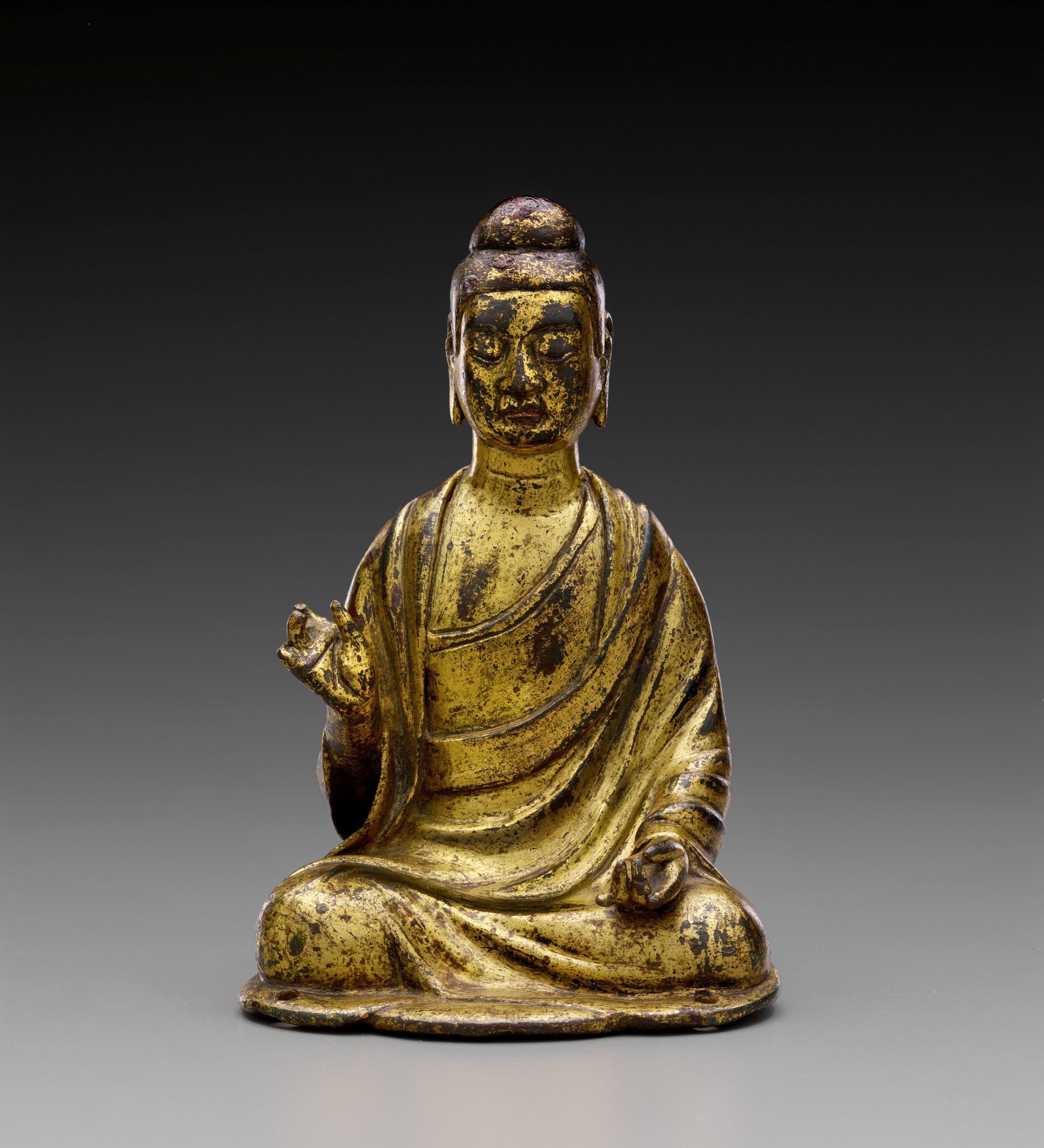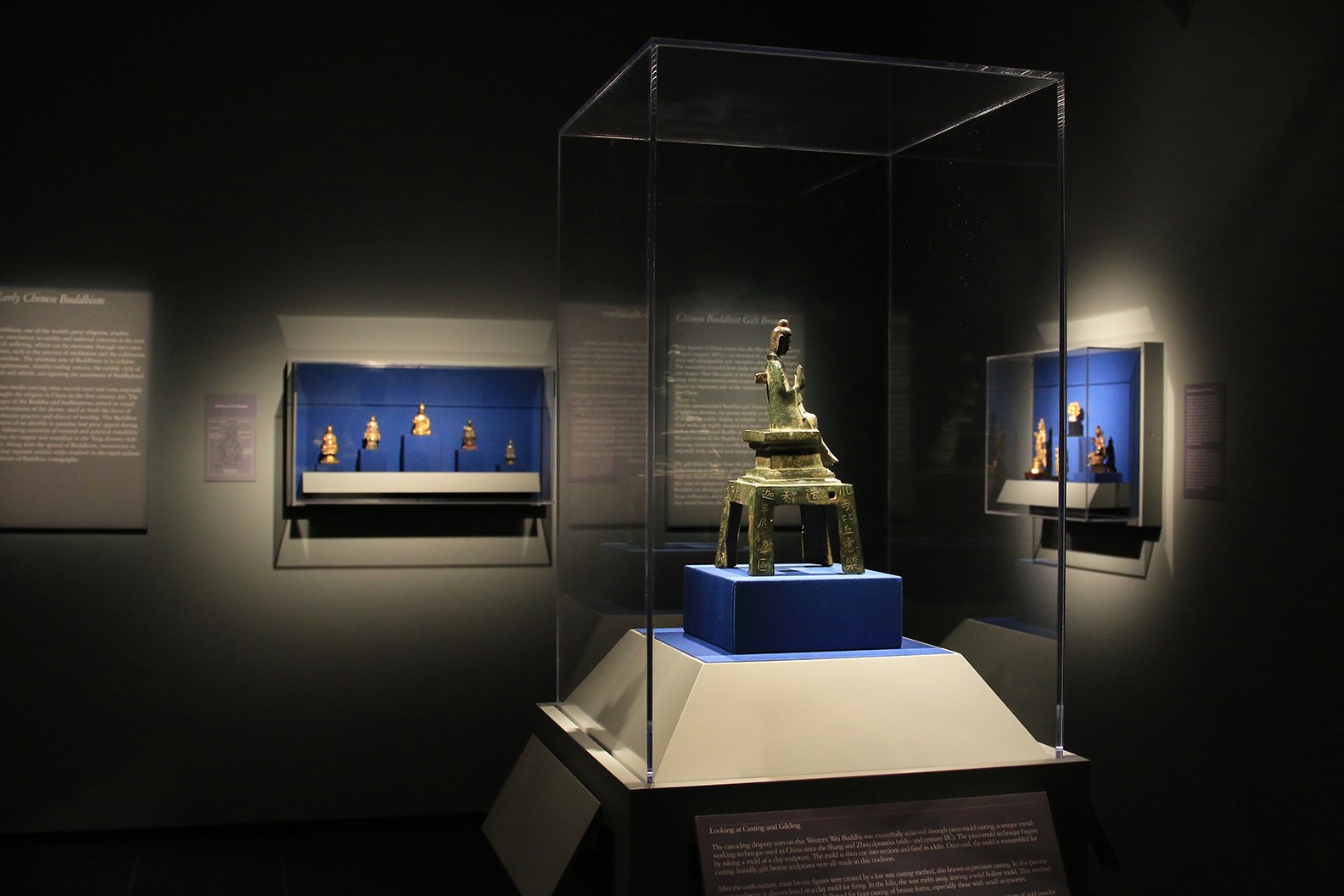“Little Known, Little Objects”: Glittering Chinese Buddhist Figures from the Jane and Leopold Swergold Collection January 9, 2018

Leopold and Jane Swergold in the Arts of China gallery, where selections from their collection of Chinese Buddhist gilt bronzes are on view.
Chinese, Amitabha Buddha, Sui dynasty, 6th–7th century, gilt bronze, Jane and Leopold Swergold Collection.
Chinese, Shakyamuni Buddha, 539 AD, gilt bronze, Jane and Leopold Swergold Collection.
Twenty-three Chinese Buddhist gilt bronzes are bringing “zen” to the Museum’s Arts of Asia galleries. Though small in scale, the objects evoke a sense of serenity—a feature that attracted the interest of collectors Jane and Leopold Swergold. I sat down with the Swergolds in the Arts of China gallery to learn more about the history of their extensive collection and what visitors can take away from the exhibition Reflection and Enlightenment: Chinese Buddhist Gilt Bronzes from the Jane and Leopold Swergold Collection.
What sparked your interest in Chinese gilt bronzes?
Leopold Swergold: I’ve done a lot of research and wrote a catalogue for Columbia University’s collection of Chinese stone sculptures. Works of art made from stone are typically large, but these Buddhist objects don’t have to be! The little objects are interesting because of what they represent. The more you look at them, the more you learn and get a different perspective. The more you look, the more you see, the more you see, the more you learn.
What is special about this installation?
LS: At home we have all of the objects in one case, in a flat presentation. Here, we have multiple cases and the groupings are perfect. Our first and most recent acquisitions are both included.
What do you want visitors to take away?
LS: This is an esoteric corner of collecting. Little known, little objects.
Jane Swergold: Particularly in Buddhist art, we found serenity. In the pieces we’ve chosen, serenity is one of the criteria: Does it have presence? How does it speak to us? This space is perfect for viewing the objects. It’s calming in here. It’s a quiet place to be.

Chinese, Amitabha Buddha, Sui dynasty, 6th–7th century, gilt bronze, Jane and Leopold Swergold Collection.
What is your favorite work in the installation?
LS: Well, that’s a little bit like asking us to choose our favorite child! The Amitabha Buddha (above), which is the first piece we bought, has always managed to withstand competition from anything new in the collection. The most recent piece (below) we bought is also really spectacular.

Chinese, Shakyamuni Buddha, 539 AD, gilt bronze, Jane and Leopold Swergold Collection.
JS: I think some people collect things so that they have one of everything or one of each type. We’ve never really done that. The way we’ve collected is that it has to speak to us, and then we measure it up against other pieces in our collection.
What do you feel when you reflect on the Amitabha Buddha?
LS: It’s very approachable. You can see it all in one swoop. If you look at it very closely, the face is serene and calming. If you stand in front of it for any length of time, you too will feel calm.
See more in Reflection and Enlightenment: Chinese Buddhist Gilt Bronzes from the Jane and Leopold Swergold Collection, on view in the Law Building.





